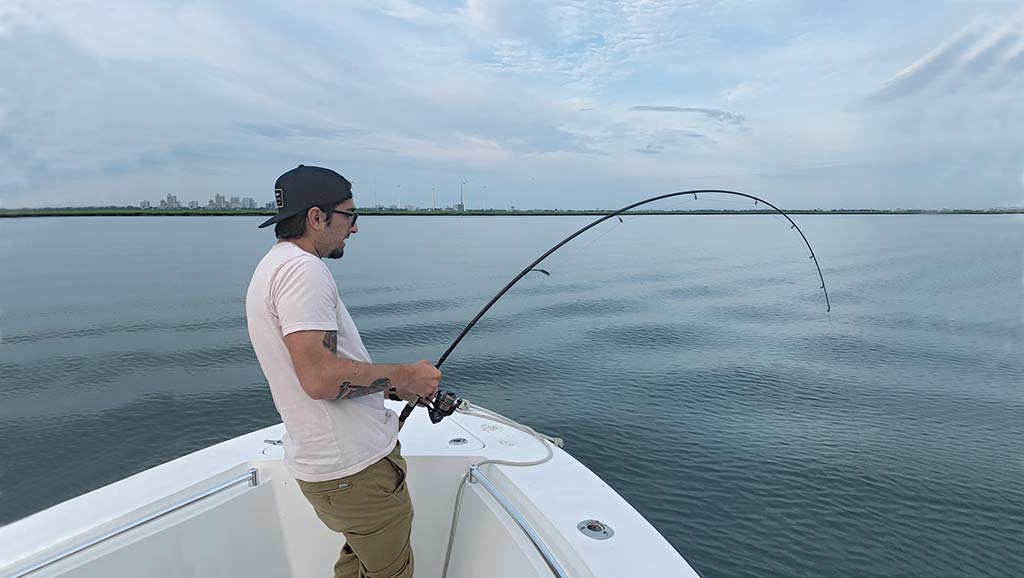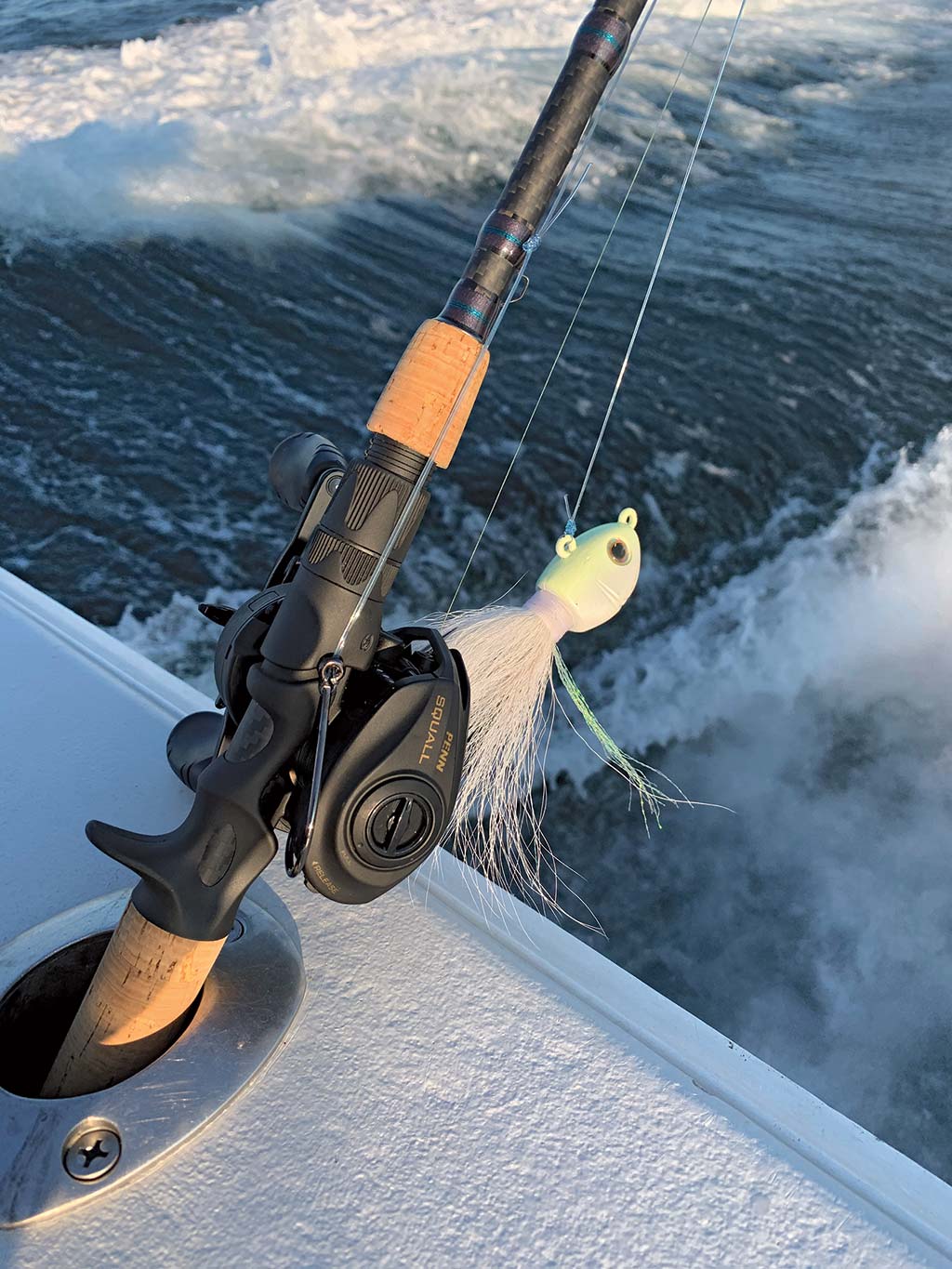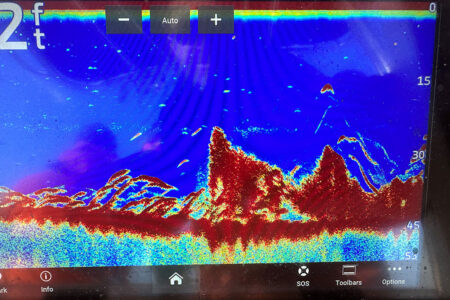
Tips for determining what fluke leader might be best for you
When I was a child, I recall the leader line for fluke being quite heavy. Shops sold pre-packaged rigs that contained line often ranging from 60- to 80-pound test. Nowadays, the movement has been to slim down the leader line and its diameter as much as possible as part of the greater equation to reach bottom with as little weight as possible. In fact, this question comes my way quite often during the winter show seasons, on the boat and even through the emails of beginner anglers. What is the right leader for fluke fishing?
For a long time, I was using 20-pound test, clear monofilament in the back bays from North Carolina to New York. I drifted and casted live baits for flatfish and never lost of fish due to a broken leader line. Summer flounder have round teeth designed to puncture and grasp their prey, but what they possess in puncturing prowess, they lack in cutting ability. Their teeth are not sharp or serrated around the edges therefore leader that slides between their teeth is generally not going to be cut.
As a matter of fact, I can’t recall reeling up with a broken leader due to the fluke damaging it. I have, however, retrieved frayed leaders from structure such as oyster shells, concrete, dock pilings, bridge remnants and other features. Because the leader was light, I always felt fortunate that I didn’t hook a doormat with unknowingly damaged line. When I caught a glimpse of the damage, I changed leaders immediately since laziness can lead to heartbreak no matter what pound test line is compromised by abrasion!
Over time, I moved to 25- and 30-pound back bay leaders and didn’t see a drop in productivity. It’s not that there was anything wrong with the 20-pound test option, rather why not get a little more strength if it didn’t deter the fish, especially when live bait angling? There is a contingent of aggressive fishermen that has gone ultra-light and prefers using as little as 10-pound test mono with the matching scaled-back tackle. This is invariably employed with small jigs, bucktails and Berkley Gulp offerings. I’ve witnessed stellar results from this tactic which are often combined with superior trolling motor operation. My only fear is that any nick or scrape could compromise the leader when under the strain of a doormat fluke. Having the drag set so the fish can take some line is also essential when going light.
When it comes to fishing wrecks, rocks and other hard structure on the ocean floor, most anglers’ preferences reside in the 25- to 50-pound test range. While 30-pound test will get the job done, the hazard of marine growth and sharp, unforgiving edges that are always present can be more impactful; 30- or 40-pound test is what I’ve been using for the last decade. It is stiff enough that dropper loops can be tied with fewer issues and light enough not to decrease scope. And, of course, 50-pound test is a sound choice for those conservative anglers that want to be certain a snapped line will not ruin their day.

Although I use clear monofilament, pink, light green and light blue have all worked well for me without any effect on the bite. Color doesn’t seem to be a huge factor in fluke striking the presentation. For as long as I can remember, my leaders have been tied with Berkley Big Game or Stren High Impact monofilaments. Fluorocarbon isn’t necessary for fluke fishing in my opinion, albeit some excellent anglers truly believe it’s a notch above monofilament due to its relative invisibility underwater. Occasionally when I’m on another six pack charter and the entire group is using fluoro, I’ll join in and use it myself. When doing so, I prefer Berkley Vanish.
Before penning this story, I talked to over a dozen fluke-oriented, charter captains and extremely successful rec anglers to see where they stood in comparison to what I’ve been using. All of them fell within the ranges discussed above; 20- to 40-pound test monofilament prevailed in the estuaries with the highest percentage using 30 and a healthy handful using 20- to 25-pound test. The ocean structure hunters prefer 30- to 40-pound test with the most common choice at the 40-pound mark.
Truthfully, there were very few outliers that in the backwaters or the ocean except for recreational, expert anglers that utilize 10- to 15-pound test in the really skinny water and some dragging 50 on the big pond.
No matter what your preference, it’s imperative to inspect the line for any damage, make sure knots are strong and change leaders when they show fatigue or stretch. Once a leader is stretched out or takes on some twists, its lifespan is over. If using a barrel or crane swivel to connect to the mainline, it should be small (40- to 80-pound). There are a variety knots that will connect braid to the leader in order to reduce hardware thus decreasing drag in the water.




